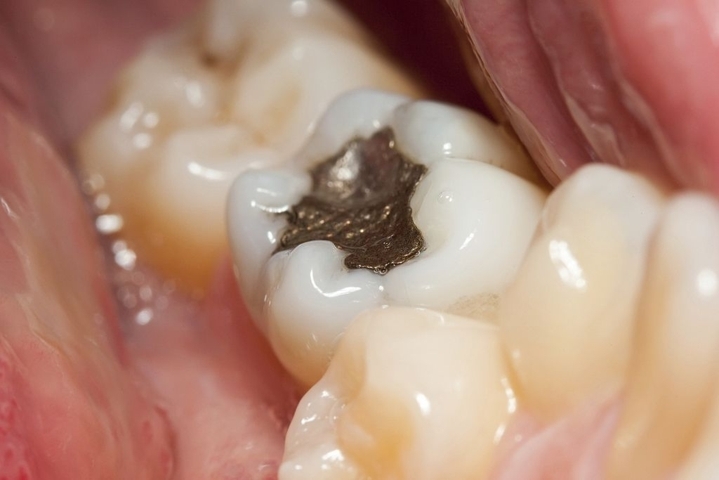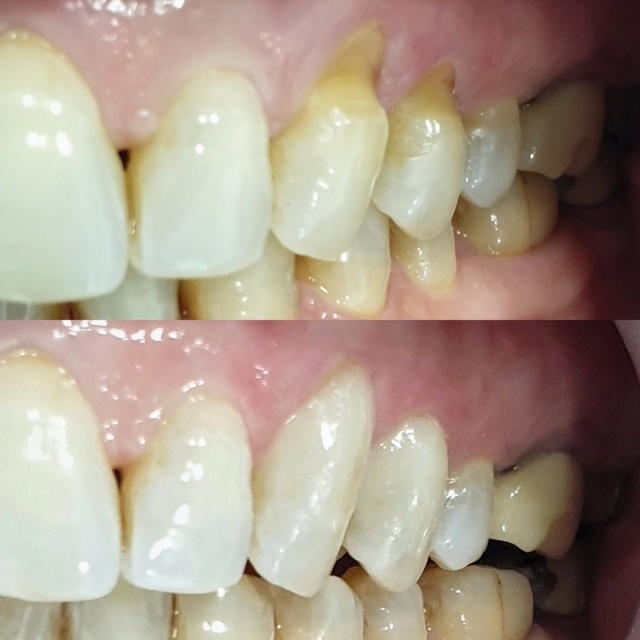
Fill your smile with happy and healthy teeth!
Imagine having a smile with crooked, chipped, or holes in teeth; even the thought of it is scary and unpleasant, right? Tooth decay leads to dental cavities, and trauma may lead to broken teeth; whatever is the case, the teeth need dental fillings to restore their strength and prevent further decay/damage.
What is the difference between dental fillings, inlays, and onlays?
The main difference is in their fabrication process i.e., Dental Fillings are placed “Directly” inside the mouth and then cured (hardened) using a curing light or chemically while Inlays/Onlays/Overlays are “Indirect” restorations fabricated in a dental laboratory and then cemented or bonded onto the tooth. Many different dental treatment options are available now; the more the advancement, the better the techniques. Dentists at Durrani’s Dental Clinic make sure to have the latest treatment options available for their patients.
Dental fillings or direct dental restorations:
When a cavity is formed due to tooth decay or a tooth gets chipped/ broken/worn out, the damaged/decayed part is removed with the help of dental instruments, the tooth is shaped/smoothened, and then filled with a biocompatible dental material like Resin-Modified High Strength GIC, Nano-filled Composites, Nano-hybrid Composites, Micro-filed Composites or Fiber-reinforced Composites. Dental Amalgam fillings are no longer accepted as a filling material due to risks of Mercury Toxicity.
The dental filling is a direct restoration; they are done in the dental office (chairside) by the dentist in a single visit.
Inlays/Onlays/Overlays or indirect dental restorations:
In a case where a large area of the tooth has been broken down due to trauma or caries (more than 25% of tooth structure is lost) and the resultant size of the restoration (filling) will be large, then an indirect dental restoration is the treatment of choice. These are fabricated in a dental laboratory and then permanently cemented or bonded onto the tooth structure.
Compared to direct restorations, indirect restorations are stronger and more durable because of the fabrication process. These are much less likely to chip or fracture or have material faults.
Indirect restorations require two appointments; the first visit is all about removing caries and taking impressions, following by the second and final visit where the indirect restoration is permanently placed.
Indirect restorations can be made of Gold Alloy, Pure Metal, Zirconium, Glass Ceramics like Emax and Composite. Depending on various factors, the dentist will provide you with the best option for you.
What are composite (Tooth-colored) fillings?
While restoring the tooth, aesthetics has to be considered as people are very conscious about their appearance. Composite is an aesthetically pleasing, strong filling material that comes in various tooth shades to replicate the natural dental tissue as closely as possible. Composite fillings are preferred over metallic fillings used in the past.
How do you place composite fillings?
Whenever there is a dental cavity, all the carious affected damaged parts of the tooth are first removed to get a smooth clean tooth structure. The cavity is then etched, rinsed, dried and then a bonding agent is applied on the cavity walls which is then cured (hardened) by a special curing light. Small increments of the composite filling material are then placed to build the walls and structure of the cavity. The final filling is then polished and the bite is adjusted so that the filling feels like a part of the natural tooth.
How long do inlays or onlays last?
If care is taken properly, sticky and hard food is avoided; oral hygiene is maintained, inlays and onlays can last up to 7-14 years. Yes, inlays and onlays are strong and durable.
Is onlay better than a filling?
Onlays are better than a filling for three-surfaced extensive cavities and damaged cusps. With time composite fillings tend to shrink while with onlays, shrinkage is not an issue; hence more durable with fewer chances of secondary caries.
Does getting an onlay hurt?
Cleaning a decayed tooth and re-shaping a damaged tooth might be painful and cause sensitivity. If the cavity is deep and the patient suffers from gum disease, getting an onlay might hurt. But dentists make sure to minimize the discomfort and pain, so they give local anesthesia to the patient to save the patient from any pain.
Almost no patient has been reported to experience pain once the treatment is completed unless the treatment was incompatible or the development of secondary caries.

Does a filled tooth get a cavity?
Depending on the material used in the filling, the oral hygiene, eating habits, and compatibility of the treatment, a dental filling can wear off or chip over time, causing a gap where food will get stuck. That will result in tooth decay beneath the filling, which is called secondary caries. Hence a filled tooth can get a cavity over time.
How can you figure it out if a filling is bad?
The right dentist will always make sure that the filling is perfect and the patient is satisfied. Still, sometimes the patient may experience discomfort after the dental treatment.
You would know if the filling is bad when;
- The pain or sensitivity does not go away.
- Food gets stuck in or between the filled tooth.
- Pain on biting or chewing.
- The bite is not proper; teeth do not meet adequately, and the filling feels high in the mouth.
- You feel sharp corners with your tongue.
Rush to the dentist if you experience any of them.
What are the benefits of inlays and onlays?
Inlays and onlays have upped the treatment game in dentistry. Inlays provide more benefits over a filling, and onlays are considered a better, less aggressive treatment option than a crown.
Inlays vs dental fillings:
Inlays are more durable than fillings and tend to last longer. They repair a larger area as compared to a filling and do not quickly wear off. Porcelain inlays, as compared to composite fillings, cause less or no shrinkage at all hence saving the tooth from secondary caries.
Onlays vs crown:
Onlays are less aggressive and therefore more expensive than a crown. Onlays are easy to manage and require regular dental care and do not damage other teeth while being added. As for the crown, the tooth is reduced to a certain shape and size to accommodate the fitting of the crown.
Inlays and onlays are a more comprehensive and advanced treatment than direct dental fillings, but as compared to crowns, they are conservative. Do visit your dentist regularly and never neglect your dental care!

